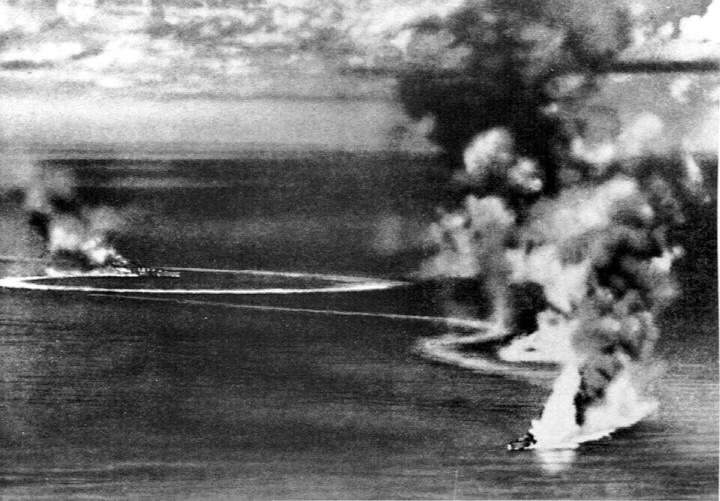On 5 April 1942, the Imperial Japanese Navy launched an attack against Colombo, Ceylon known as the Easter Sunday Raid or the Battle of Ceylon, a part of the Indian Ocean Raid. The targets of this attack were British warships, harbours, and air bases. To the surprise of the Japanese military, who had intended this attack to mimic the off-guard attacks on the ships at Pearl Harbor, many of the ships they’d hoped to be anchored at the port were at Adu Atoll at the time. The first strike sunk two ships in the harbour: an auxiliary cruiser HMS Hector and an older destroyer, HMS Tenedos.
The picture below, taken from a Japanese aircraft shows the Royal Navy heavy cruisers HMS Dorsetshire and HMS Cornwall under heavy air attack by Japanese carrier aircraft. Cornwall and Dorsetshire were attacked in the second wave of the Easter Sunday Raid by over 50 Japanese aircraft. Cornwall was struck and sank within minutes of being attacked.

To see a cutaway of HMS Cornwall and learn more about British heavy cruisers, take a look at NVG 190, British Heavy Cruisers 1939-45 by Angus Konstam. An accompaniment to NVG 194, (which provides comprehensive coverage of the British Light Cruisers of World War II) this book examines the development and operational history of the heavy cruisers of the Royal Navy during their extensive wartime service.
The original image can be found here.


Comments
You must be logged in to comment on this post. Click here to log in.
Submit your comment